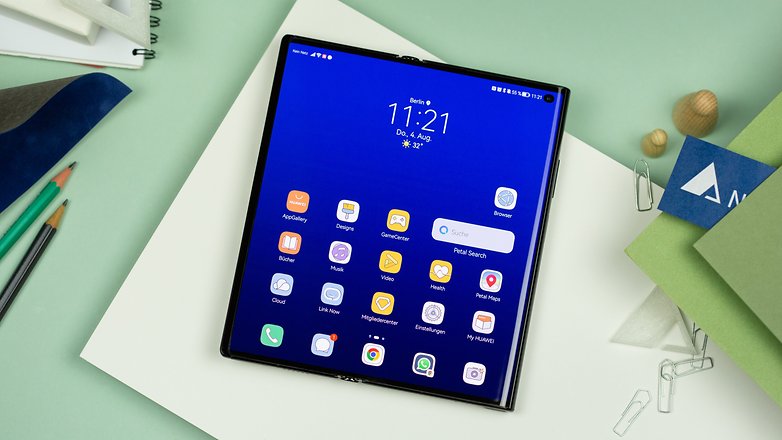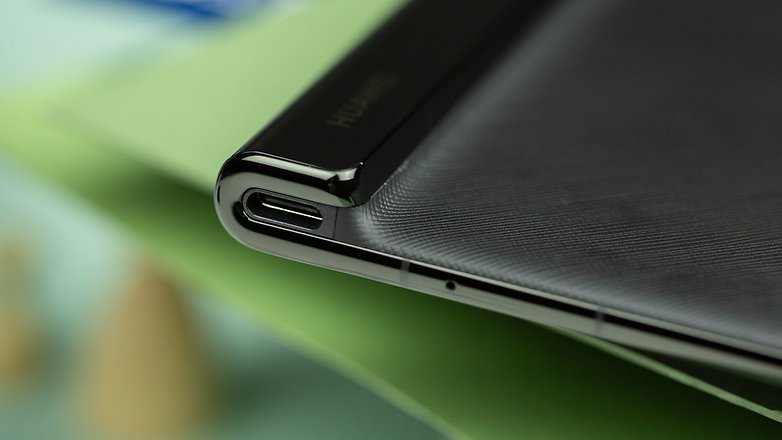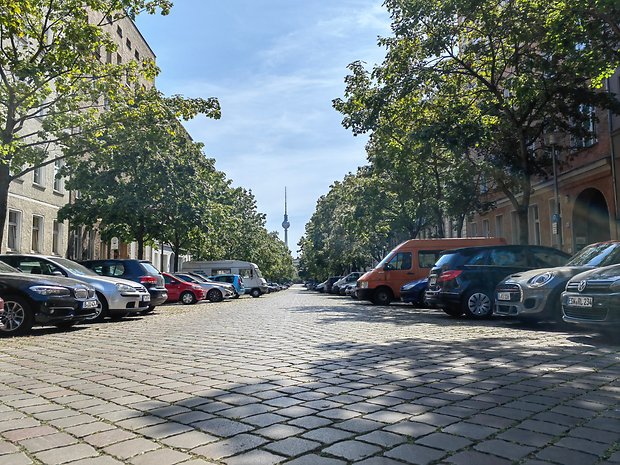Huawei Mate Xs 2 review: $2,000 foldable as a daily driver


Huawei has released a real luxury foldable with the Mate Xs 2! You will have to fork out a whopping $2,000 for a foldable smartphone that has to compete with Samsung without Google services. For my review, I used the foldable as a daily driver over the course of a few days and discovered whether the purchase can somehow be justified in front of financial advisors and partners.
Good
- Brilliant 7.8-inch display with 120 hertz refresh rate
- Functions well even when folded
- High performance level
- Solid camera setup with great selfie performance
- Surprisingly thin
Bad
- No 5G and technically outdated
- Functionally limited without Google services
- Sensitive as it flips outwards
- Not the best case build quality
- Moderate battery life

The Huawei Mate Xs 2 in a nutshell
Technically, the Huawei Mate Xs 2 is an impressive smartphone. The folding mechanism performs well in everyday use despite the rather suspect case build quality. The brilliant 7.8-inch AMOLED screen with a 120 Hertz refresh rate is a delight for multimedia use, and the performance is also good thanks to the Snapdragon 888 SoC.

However, the $2,000 smartphone (it is not available Stateside for obvious reasons) does not receive a purchase recommendation from us despite that. This is because to use an Android-powered device without Google services included is still a very cumbersome process in 2022. This is not only because I have to make do without my usual repertoire of apps, it is also attributed to a poor localization effort, massive bloatware, and inferior Huawei apps. In addition, the battery life is simply mediocre and the hardware looks outdated in 2022.
Even though the Mate Xs 2 is a nice piece of technology, there are better foldables that will reach a new level with the third generation of Samsung's Z series ready to launch in the next few weeks.
Design & Display: Well implemented concept
The Mate Xs 2 is a foldable that bends the folding edge outwards when folded. The 7.8-inch flexible display is therefore unprotected without a cover and will be very susceptible to scratches. Attaching the included sleeve is therefore highly recommended when setting up the device.

What I liked:
- Brilliant and fluid display
- High-quality and thin case
- Fun handling without a case
What I disliked:
- Mandatory case makes handling difficult
- Flimsy design
I'll get brutally honest: The case that Huawei includes with the smartphone and recommends you use during the setup process is ridiculous considering the purchase price. It feels cheap, has to be removed halfway when opening the phone, and then hangs around loosely at the back. Using the Mate Xs 2 without a case is dangerous though as the display flips onto the back when it is opened.

Although the Mate Xs 2 is supposed to be particularly shatterproof and shock-resistant according to the manufacturer, the screen is hardly protected against scratches when it is used without a case. There is simply no way to place the phone safely on rough surfaces without a case without avoiding scratches. The 7.8-inch AMOLED display with a 120 Hertz refresh rate and a high pixel density of 424 ppi is too brilliant and beautiful to be scratched.
The same can be said about the entire phone. Tipping the scales at a mere 255 grams, the smartphone is nice and light, measures just 5.4 mm at its thinnest point when opened, and then even has a small edge to provide a more secure grip. The combination of a high-quality case and brilliant display is a delight when reading and enjoying multimedia content, with the only drawback being the case's poor execution ruining the extravagant premium feeling.

There are also further restrictions listed on Huawei's homepage which concerns the Xs 2: You should not use the phone in the rain, do not put it in the sand, and do not use the folding mechanism at temperatures below 14°F. Removing the installed protective cover or adding another film will also void the warranty. Yes, the Mate Xs 2 is more robust than its predecessor, but still an extremely fragile device that costs $2,000.
Software: Still on Android, still without Google
EMUI 12.0.1 based on Android 11 that comes preinstalled on the Mate Xs 2. Thus, Huawei's very own HarmonyOS is still missing and the same applies to Google services. Important apps cannot be used at all or are rather awkward as a result.
What I liked:
- Smooth transition when opening and closing
- Many customization options
What I disliked:
- Outrageous amount of bloatware
- Many apps are unusable
- Localization of Huawei apps are often poor
The trade embargo of the USA against Huawei still causes problems after several years. This is because without Google services, the feature set is severely limited compared to other Android phones. Important apps like Gmail, Google Chrome, WhatsApp, or Instagram cannot be used on the phone at all or only in a cumbersome manner. Here is one very good example:
The instant messenger WhatsApp refuses to work without Google services. Therefore, I had to use a shortcut to WhatsApp Web on the home screen, but it only displays the messenger in desktop mode. This is simply too cumbersome and much less fun than the native app. However, thanks to the clever integration of an APK installer, you can usually find a way to use the desired apps which will require you to jump through hoops of flaming fire.
- More on this topic: This is why you should not use Android without Google.
However, it is far more annoying that Huawei installed an incredible amount of bloatware and displays even more app recommendations in the operating system. At this point, I would like to point out once again that the Mate Xs 2 costs $2,000, leaving a very bitter aftertaste.
Performance: Top performance with old hardware
The Mate Xs 2 was confirmed for the EU market in April 2022. At that time, the Snapdragon 888 SoC from Qualcomm was already quite dated. Nevertheless, it continues to churn out flagship-level performance, and the same applies to the ample storage of up to 512 GB of storage space and 12 GB of RAM.
What I liked:
- Enough performance for multitasking and AAA games
- Surprisingly few overheating problems
- Ample memory configurations
- Expandable memory
What I disliked:
- No 5G support
- Pretty outdated hardware
Despite its release in April 2022, the Mate Xs 2's spec sheet looks a bit old-fashioned. We already know that there are smartphones which costs less than $500 that carry the Snapdragon 888 SoC. The Snapdragon SoC used here also lacks a 5G modem, which means you cannot take advantage of the new mobile standard. Forget about the performance of newer processors, the following can be said:
The Mate Xs 2 delivers a really crisp performance in everyday use. Switching between closed and open apps go on without a hitch, I could easily switch between several apps while multitasking, and mobile games also ran on maximum settings smoothly. Unfortunately, Huawei's AppGallery, the company's alternative to Google's Play Store, offers a rather small selection to choose from, but the graphics could still be tested very well with games such as World of Tanks and Modern Warships. I could crank up all settings in each case and everything ran smoothly.

Huawei's retention of a memory expansion slot is a positive move. Although you have to resort to the proprietary nanomemory cards, the lack of an expandable memory option is missing in many flagships.
Huawei's heat dissipation is not only good, but impressive. The Snapdragon 888 is considered to be a processor with particularly high heat development and I was really worried about thermal throttling in view of the thin casing. The phone heats up noticeably in Berlin's high summer with temperatures above 95°F, but the performance remained stable. This is confirmed by the 3D Mark stress test, which simulates a 20-minute continuous load.
| Huawei Mate Xs 2 | OnePlus 10T (SD 8+ Gen 1) | OnePlus 10 Pro (SD 8 Gen 1) | Oppo Find X5 Pro (SD 8 Gen 1) | Samsung Galaxy S22 Ultra (Exynos 2200) | |
|---|---|---|---|---|---|
| 3DMark Wild Life |
|
|
|
|
|
| 3DMark Wild Life stress test |
|
|
|
|
|
| Geekbench 5 |
|
|
|
|
|
Overall, the Mate Xs 2 results in a performance level that you would expect from a $2,000 smartphone. However, the hardware is not quite as future-proof as other top smartphones in 2022. Frequent surfers in urban areas will also be annoyed by the lack of 5G support.
Camera: Perfect for selfies
The back of the Mate Xs 2 is adorned with a triple camera configuration. You can choose between a 50 MP main camera, a 13 MP ultra-wide-angle camera, and a telephoto camera with 8 megapixels resolution. The front-facing camera has a resolution of 10.7 megapixels—alternatively, you can also use the display on the back as a selfie monitor for the main camera.

What I liked:
- Good results during the day
- Very good selfies thanks to rear-view mirror feature
- Optical zoom with image stabilization
What I disliked:
- Case constantly gets in the way during photo taking sessions
- Poor night photo quality
- Technically not up-to-date
Here is what I would like to say in a nutshell: the camera of the Huawei Mate Xs 2 does not quite perform as expected in a $2,000 smartphone in 2022. For example, only the telephoto camera has optical image stabilization and there are too few custom features. Due to the construction, you also have the rare option of using the unused display as a selfie rear-view mirror when it remains folded. The smartphone is therefore very well suited for selfies.
However, Huawei's operating concept caused problems here again. If you take pictures with the display open and have the case installed, it constantly gets in the way of the frame. To avoid this from happening is an awkward process. To show how this looks like, you can find some sample photos with in my picture gallery. If you remember how superior Huawei's smartphone cameras once were, the overall results are sobering.
Battery: Second biggest weakness of the Mate Xs 2
The battery of the Huawei Mate Xs 2 has a 4,880 mAh capacity, which sounds impressive at first. However, the 7.8-inch display and the Snapdragon 888 SoC are demanding customers when it comes to energy consumption. Quick-charging works at 67-watts via the included power adapter, but you will have to live without wireless charging.
What I liked:
- Large battery capacity
- Fastest quick-charging among foldables
What I disliked:
- Battery life is only moderate (5 hours in the benchmark)
- No wireless charging support
As a hybrid between a smartphone and a foldable, we have to assess the battery capacity of the Mate Xs 2 a bit differently. This is because the 7.8-inch AMOLED display with a 120 hertz refresh rate needs more power than the displays of most conventional smartphones. What is exciting here is that, unlike Samsung's Z Fold 3, there is no secondary display. Half of the primary display is only turned on half when it is folded over.

In the battery benchmark with the smartphone left open, the battery life is below average at just over five hours. However, PC Mark simulates a permanent use of the phone. In everyday use, you can expect a runtime of one day if you pay a bit of attention to the battery and react accordingly. An example:
On a regular work day, I went to a park around 7 p.m. and used the Mate Xs 2 to read articles in the Chrome browser. Although the Mate Xs 2 made it through the day with over 70 percent, the capacity dropped to below 40 percent after half an hour of reading on the large display. So you have to be a bit careful not to overuse the benefits of the foldable when there is no nearby power outlet (or carry a power bank with you).
Charging speed Mate Xs 2
| Charging status | Time |
|---|---|
| 10 % | Starting point |
| 20 % | 6.3 minutes |
| 50 % | 38 minutes |
| 75 % | 50 minutes |
| 100 % | 65 minutes |
Charging happens at 67 watts, but is not too effective in reality. You can view the results with the original charger in the table above. Wireless charging is not available.
Final verdict
For a technology fan, the Huawei Mate Xs 2 is really impressive. The operating concept works, the build quality is top notch, and even the handling of the EMUI operating system on the foldable display is impressive. However, this enthusiasm is so short-lived that trying it out in the technology store is almost enough.

During my review, I didn't even leave my personal iPhone 13 mini at home. This is because the Mate Xs 2 is too functionally limited without Google services for me to do everything I need in everyday life with it. Furthermore, handling the device when using the recommended protective case is a cumbersome experience.
As a $2,000 flagship, the foldable is also technically outdated, which is especially evident in the cameras in everyday use. The long list of precautions on Huawei's homepage also made me doubt the phone's longevity. After all, the Mate Xs 2 is not waterproof, consists largely of a scratch-sensitive display, and should not be opened at low temperatures.
Foldables actually offer added value in everyday use, but heavy users benefit from it most of all. And Samsung's new foldable generation, which will be introduced in August 2022, is most likely the better choice for them.




































